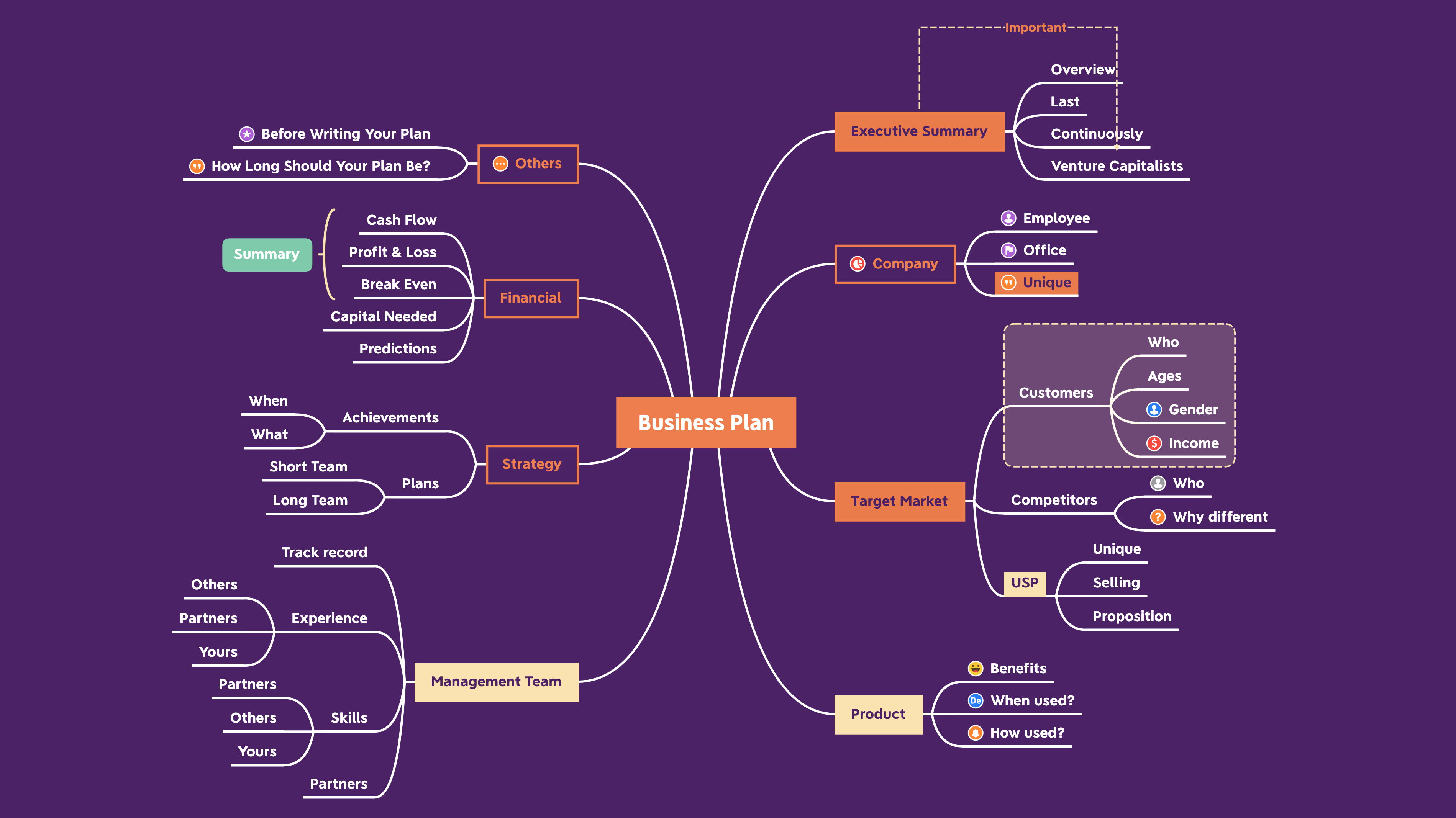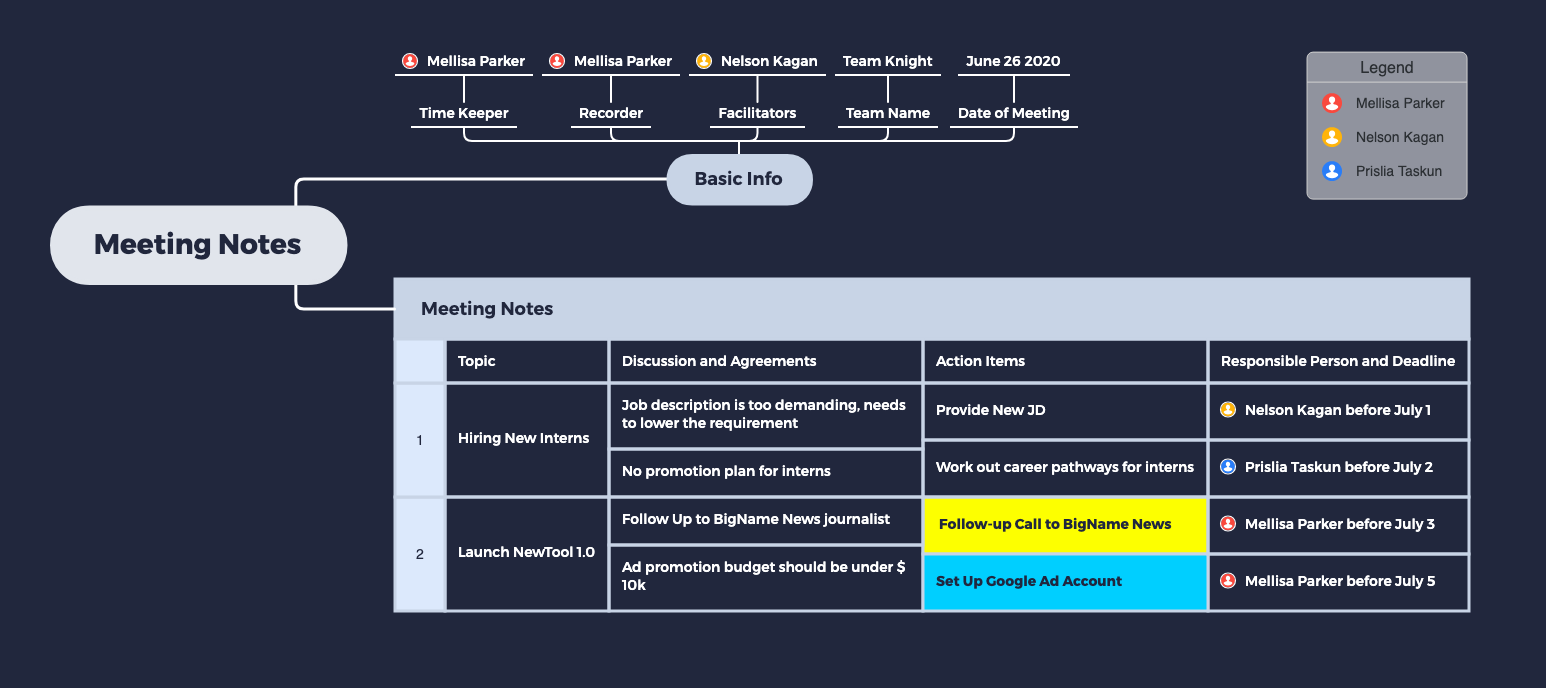What and Why You Need a Mind Map

What and Why You Need a Mind Map
Mind map tools are increasingly sought after by productivity hackers. Thanks to its low learning curve and effective visualization of abstract ideas, the mind map gradually shows up on various best-selling books’ cover.
However, to keep it secret and pave the way for over-priced products, some marketers intentionally created confusion. What goes with it is anger from mistreated users, who cried out “mind map is a scam,” “why mind map is useless.”
Today we are going to debunk all these myths in a simple and clear way. If you want to jump in detail on how to create a beautiful mind map, you can check out our hands-on mind map guide
The short answer is: a mind map is a tree chart that helps you capture ideas.
The following is a long story.
What is a mind map
The terms, Mind Map and Mind Mapping were created by Tony Buzan, who was inspired by the ancient Greeks’ memorization techniques. The Greeks made good use of association and imagination to connect new information with an existing memory and thus to stimulate the brain to recall the details accurately. Many great thinkers in history, especially Da Vinci, often used graphs, codes, and links to “doodle” in his notes.
Buzan stressed that a graphical way of thinking is the core of mind mapping. To complete his theory, he further promoted tapering lines, color branches, and much more, aiming to mimic neuron cells.
But if you look elsewhere, you'll find lots of people benefiting from mind maps by just using them casually.
Mind maps, in their essence, are visual thinking tools that visually organize information.
Narrowly speaking, a mind map is a type of tree chart that puts the title in the center and expands topics both horizontally and vertically.
In just one sentence, the mind map is just a tree chart.

Why do we use mind maps
To figure out the missing tile quicker
The thoughts in your mind, disorganized and ambiguous, get tangibly displayed by visual elements in mind maps. With the visualized ideas at hand, you can locate breakthrough points much quicker. The human brain always prefers visual and orderly information.

To get the big picture view
As the mind map extends in all directions, it contains more information in the same space than an outline does. You can get the big picture of the knowledge map within a glance.

See also
20+ Useful Brainstorming Map Templates
To improve memory and reasoning ability
In a study, researchers found that mind maps can help participants boost retention by 10-15%!
To avoid misunderstanding, it is the process of hand motoring and organizing ideas that forces the human brain to consolidate the information. Reading of finished mind maps does not help, as that is only passive learning.
You can check out the mechanism of hand-drawing in another blog post, Demystifying War between Hand-drawn Mind Maps and Digital Mind Maps. Also, if you want to learn about actionable study hacks backed by science, you can check out Top 15 Actionable Learning Hacks And The Science Behind Them.
What can we do with mind maps
Any scenarios! So long as the information is messy and in scratches. To name a few, time management, brainstorming, presentation outline, meeting summary, book summary, etc., are all suitable situations.
If all the topics inside a mind map is a pile of information, the diagram might be too clunky to read. One compromise is to keep the first two levels of topics in brief words, and put paragraph of detail information inside lower levels or even in the attachments.
Back to the use cases, here are a few of them:
Reading notes
Make a mind map while or after you are reading a book. Especially with the book closed, the hand-drawing process helps stick information to your mind. It works the same as longhand note-taking during lectures.


Business project plan
With abundant choices of visual elements, you can visualize the whole project level by level inside a mind map. Again, a better overview.

See also
20+ Easy-to-Use Mind Map Presentation Templates (Business Plans, Book Notes, and More)
Time management
When the scope and quantity of the tasks are involved, you can use the GTD task quadrants to arrange them. Put jobs in four quadrants according to importance and urgency. Then you can quickly prioritize the urgent and essential tasks.

See also
How to Manage Your Time with Mind Mapping
Problem-solving
Fishbone is an excellent choice for causes-and-effect analysis. Matrix is ultimate in sorting clues in more than two dimensions. You can get further details on how to use matrix and fishbone here.

Improve meeting efficiency
Most of the meetings are just lengthy and inefficient. Meeting while editing mind map anchors participants’ focus. It also saves time afterward, as you do not have to make time for meeting notes.

What mind maps cannot do
Above are what mind maps typically can help with, but it cannot do everything.
Stimulate the left brain and right brain to work together
The biggest myth and also the most annoying one, which keeps many users yelling at the idea of mind mapping. Unfortunately, even the left brain/right brain theory is proved to be a myth by a 2013 study. Our brains do not favor one side over the other in any tasks. Without stimulation, they work together. So creating mind maps does not improve the stimulus but not harm.
Okay, above, it’s our definition and examples for using mind maps.
What do you think is the definition of the mind map? How do you typically use a mind map? Tweet me if you have any thoughts!
Try Xmind Free

